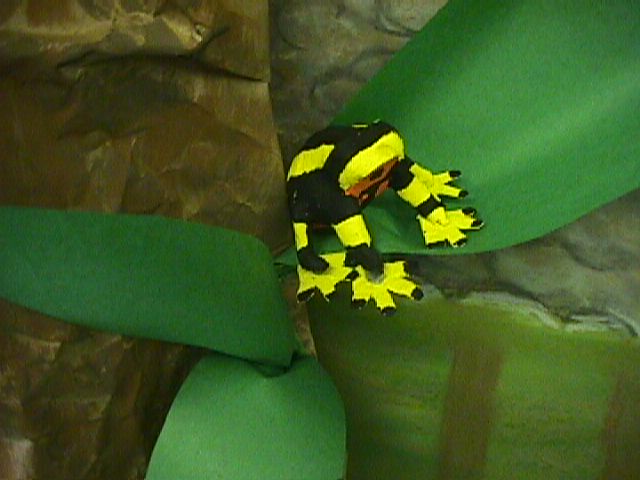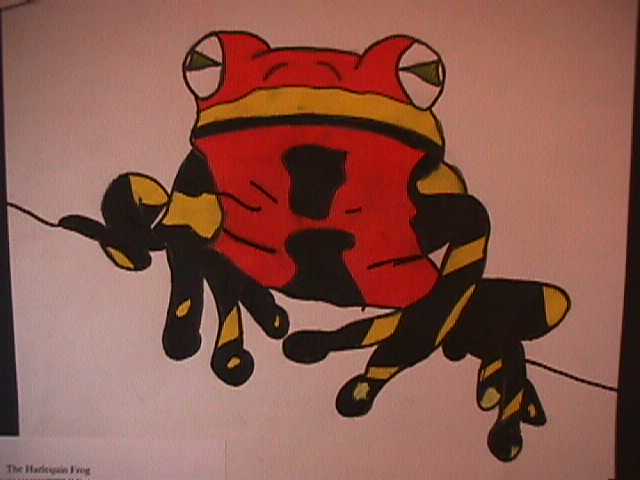Harlequin Frog
The scientific name for a Harlequin Frog is Atelopus
varius. This frog is from the mountain rainforests of the South America.
Several groups of frogs are brightly marked to warn of poisonous secretion.
The Atelopus varius is largest frog group containing forty-three species
from Central America to Bolivia. These frogs are found on the forest floor,
which is covered with a thick layer of decaying vegetation and animal debris.
High humidity and thousands of microorganisms that help break down the
material into living nutrients are absorbed by the plants and this accelerates
the deterioration of this layer of the forest. Atelopus varius feed
on flies, worms, and other small insects that live in this decaying vegetation.
The lingual flip is how a frog secures its meal. The tongue reaches
out grabs its food to guarantee them a tasty meal.
The frog’s most common predator are snakes,
bird, fish, and other small mammals. The eggs of the Harlequin frog contain
poisons that attack the nervous system; this helps discourage predators
like snakes, fish, and small mammals from lunching on the frog’s caviar.
Harlequin tadpoles have very large mouths which mean they eat a lot and
it also means they can hang on. The Harlequin frog tadpoles develop in
fast running streams and the tadpoles' mouth acts as a section disc to
attach it to the rock.
HOLLY


| Return
to our Student Directory |
Student Projects
North Star Academy
"An Alternative Path to Success"
Polaris Career Center
Middleburg Hts. Ohio
Spring 1999

